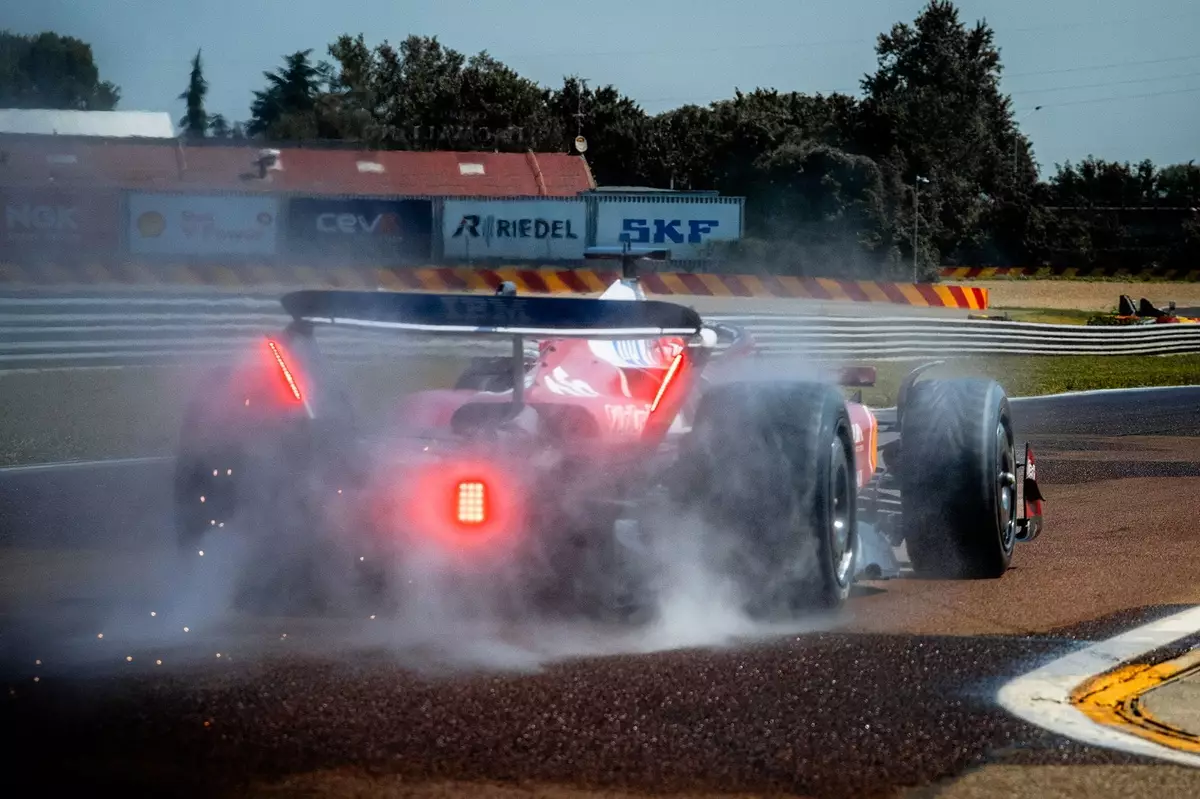The world of Formula 1 racing has always been synonymous with precision engineering and relentless speed. However, when the rains come pouring down, the challenges grow exponentially due to the complex nature of wet tyres. Pirelli, the exclusive tyre supplier for F1, is on a mission to revamp its wet tyre performance to ensure a safer and more thrilling racing experience. A closer look reveals the intricacies and pressing issues surrounding wet weather racing.
The Challenge of Wet Racing Conditions
Rain is the great equalizer in F1. While dry track conditions may showcase the raw speed and engineering superiority of a team, wet conditions throw a massive wrench in the works. Consider the staggering statistic that Pirelli’s wet tyres can displace up to 85 litres of water per second at racing speed. When all four tyres deploy this capacity, the spray created isn’t just a visual spectacle; it severely compromises visibility for drivers, leading to dangerous situations on the track. The infamous incidents in Belgium 2021 and Sao Paulo exemplified the perils of wet racing, with drivers often opting to remain on intermediate tyres to maintain track position rather than risking a pit stop for wet tyres, only to witness red flags cutting their races short.
The present state of F1 wet tyres reveals a glaring problem: they frequently overheat and degrade rapidly unless conditions are excessively dire. This has led to a disheartening trend where wet tyres are rarely used in competitive racing. In 2023, their application was limited to a mere single instance when Carlos Sainz briefly showcased them in the Miami sprint. Such infrequency raises questions about the viability of wet tyres and their role in a sport that thrives on adrenaline and high-octane drama.
The Road to Improvement
In response to the challenges posed by wet racing conditions, Pirelli is pushing for significant enhancements in their wet tyre offerings, particularly with the upcoming 2026 F1 season in mind. Mario Isola, Pirelli’s motorsport manager, has indicated a keen focus on aligning the performance of wet tyres more closely with those of intermediates. The objective is clear: create a wet tyre that not only can withstand adverse conditions but also deliver competitive performance without necessitating a lengthy waiting game behind the safety car.
The targeted approach includes experimenting with a crossover point—the moment when it becomes more beneficial for drivers to switch from intermediate to wet tyres. Historically, this transition has been clunky, with the previous generation of wet tyres effective only at a lap time that was 120% slower than on dry. In contrast, the new specifications aim to shorten that gap significantly by targeting a crossover rate of around 116%. During testing sessions at Ferrari’s Fiorano circuit, drivers Charles Leclerc and Zhou Guanyu utilized ‘mule cars’ simulating the loadings of the next-gen cars. However, this method has its limitations as it lacks empirical accuracy, particularly in unpredictable weather.
Innovative Strategies in Tyre Development
As part of their ongoing development, Pirelli recently introduced alterations to their wet tyre construction, including varied compounds and an improved tread design aimed at minimizing instability during lateral movements. Such innovative strategies are essential not only to enhance performance but also to address safety concerns that debilitating visibility poses. The feedback loop provided by actual race conditions is vital, yet the racing calendar often resorts to red flags at the slightest threat of poor visibility rather than allowing wet tyres to demonstrate their capabilities.
In 2026, Pirelli aims to leverage extensive real-world testing to validate their designs for wet and intermediate tyres. Collaborating closely with teams and drivers will be crucial, as a solid understanding of performance dynamics can help drown out the noise of predictably hazardous racing weather. While some may argue that a wet race is merely a gamble, the inherent unpredictability adds an exhilarating layer to motorsport that enthusiasts relish.
The future of wet tyres holds promise, but clear vision and decisive action are imperative. Efforts to improve not just performance but also the overall safety of drivers demonstrate that F1 is fiercely committed to ensuring thrills do not come at the expense of safety. Balancing innovation and risk remains the fulcrum of the task ahead, and it is certainly a challenge that should excite every stakeholder in motorsport.


Leave a Reply